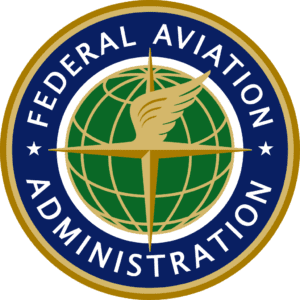Global Avionics Round-Up from Aircraft Value News (AVN)

Federal Aviation Administration logo.
As air traffic in the United States continues to grow, the Federal Aviation Administration (FAA) is facing increasing pressure to modernize. With the second Trump administration now underway, newly appointed Secretary of Transportation Sean Duffy has placed FAA “reform” near the top of his agenda.
In a series of early policy moves, the administration has signaled its intent to reshape the agency with a focus on deregulation and personnel cutbacks.
Supporters say these efforts are aimed at making the FAA more efficient by reducing bureaucracy and introducing private-sector discipline. However, critics warn that this approach may misdiagnose the FAA’s challenges and risk undermining core functions tied directly to public safety.
To be sure, Secretary Duffy recently announced an ambitious initiative to modernize America’s Air Traffic Control (ATC) system, replacing the decades-old infrastructure with cutting-edge technology designed to set a global standard.
Duffy stayed tight-lipped on the exact price tag for the plan. The U.S. House Transportation and Infrastructure Committee recently projected that modernizing the ATC system could run at least $12.5 billion.
The Modern Skies Coalition—a group of aviation industry specialists, pilot representatives, and other stakeholders—is urging at least $18.5 billion in extra emergency funding for ATC over the next three years, above the $12.5 billion already under discussion. This would be on top of the FAA’s regular budget for technologies and facilities.
NextGen Delays
Meanwhile, the FAA’s existing modernization program, known as NextGen, has faced delays and uneven implementation since its launch nearly two decades ago.
Designed to shift the U.S. from radar-based tracking to a satellite-enabled system, NextGen promises increased efficiency, reduced delays, and enhanced safety. Yet progress has been slow, with many regions still operating on outdated technology.
Labor concerns are also surfacing. The FAA is already grappling with a long-standing shortage of certified air traffic controllers, many of whom are approaching retirement age.
Recent signals from the administration about potential changes to labor protections have raised alarms among union leaders and workforce advocates. They argue that uncertainty around compensation, benefits, and job security could further destabilize the workforce and make it harder to attract new talent.
The long-term implications of such changes could extend beyond day-to-day operations. Aviation analysts point out that the U.S. risks falling behind in global aviation leadership if reforms lead to reduced performance standards.
Other regions, including the European Union and China, are investing heavily in artificial intelligence (AI)-enabled routing, digital towers, and automated conflict detection, all aimed at making their airspace safer and more efficient.
The FAA has long played a central role in ensuring the safety and reliability of U.S. air travel, while also serving as a model for aviation authorities around the world. Supporters of a more incremental approach argue that the agency’s problems stem not from excess bureaucracy, but from decades of inconsistent investment and shifting political priorities.
As the administration moves forward with its FAA reform agenda, the debate continues over how best to achieve modernization without compromising the core mission of public safety.
Hero Pilot Sully Speaks
Captain Sully Sullenberger, the pilot who saved 155 people by safely landing an A320 in the Hudson River, in June came forward with his thoughts on President Trump’s pick to head the FAA. The hero pilot, who performed what became known as the “Miracle on the Hudson,” bluntly stated about Trump’s choice: “We all deserve better.”
Trump’s anointed FAA chief, Bryan Bedford, has made some highly controversial comments regarding pilot experience requirements.
In a strongly worded statement, Sullenberger warned that Bryan Bedford’s appointment could “undo” his life’s work in pursuit of aviation safety. He pointed specifically to Bedford’s lack of commitment to the 1,500-hour rule: a post-Colgan Air crash regulation requiring airline pilots to have a minimum of 1,500 flight hours before carrying passengers.
Bedford in June admitted that he didn’t hold a commercial pilot’s license despite claiming to have one for years on the website of Republic Airways, where he once held the position of CEO. He does, however, have a private pilot’s license.
Despite lying about his credentials, Bedford was confirmed by the GOP-led Senate and sworn in last month as FAA Administrator. His opponents in Congress lambasted his confirmation as an indictment of the agency’s vetting process.
As FAA head, Bedford vows to “streamline” the agency’s leadership structure. His background as a government outsider is likely to influence this restructuring.
This article originally appeared in our partner publication Aircraft Value News.
John Persinos is the editor-in-chief of Aircraft Value News.